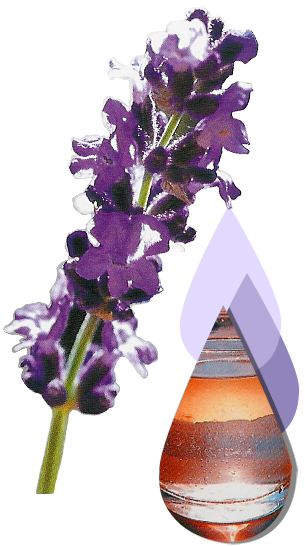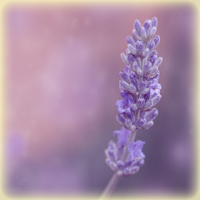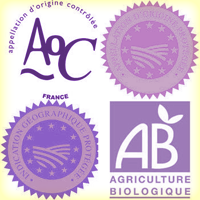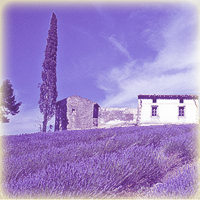Lavender honey
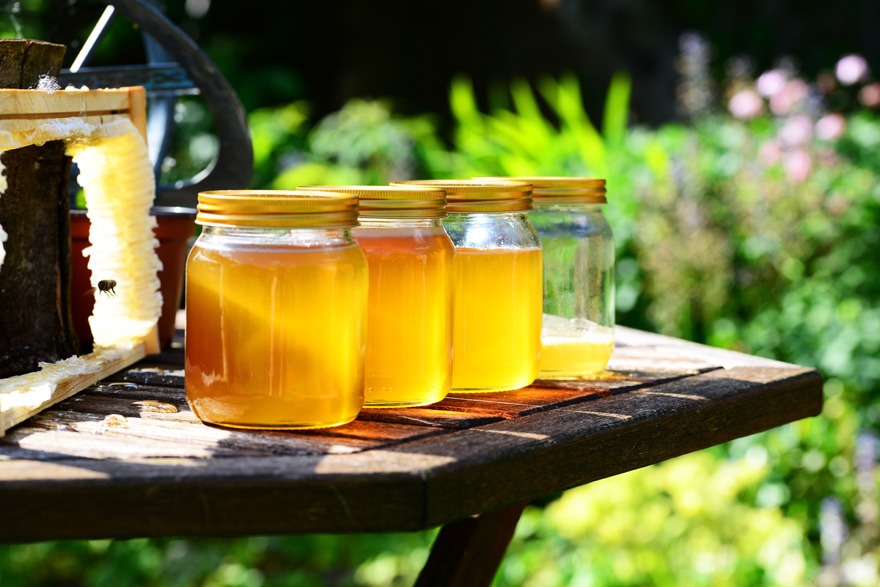
Lavender and bees
Throughout the flowering period, intense beehive activity begins before sunrise and does not stop until after sunset. An estimated hundred bees can be at work simultaneously on each lavender plant. This activity is due to the strong secretion of nectar and the concentration of beehives in the cultivated areas.

Honey from Provencal lavender is famous for its high quality.
It has a clear, almost white color, pleasant taste and fineness of crystallization. Excellent for health, anti inflammatory respiratory and anti spasm virtues have been attributed to it.
The value of associating aromatic plants and beekeeping has been known since antiquity. In the seventeenth, eighteenth and nineteenth centuries, it was recommended to plant lavender around hives:
"Lavender is one of a number of plants that are sought by bees, and in the rustic gardens in temperate European climates where rosemary does not grow well, lavender is planted around beehives because it gives a pleasant aroma to the honey gathered by bees from their flowers."
Exploitation of the plant and honey production from bees gathering nectar in lavender flowers have been practiced since long ago in Provence. This has sometimes provoked conflicts of interest that ended up generally by a settlement favoring apiculture.
Thus in 1777 a decree from the Sault City Council forbade “cutting lavender flowers and aromatic plants to safeguard the bees of the region.”
Lavender and lavandin are plants having high melliferous or honey producing value when grown in a climate favorable to beekeeping.
The period when lavender and lavandin flower corresponds to a time of famine for bees which explains the high number of beehives transported each year to the plantations.
* Sources : GINGINS-LASSARAZ (F.), Histoire naturelle des lavandes, Paris-Genève, 1826.
"Lavandes et Lavandins", Christiane Meunier, Editions Edisud, 1999
Photo : Steffen LIPP - 'Hives at Sault'
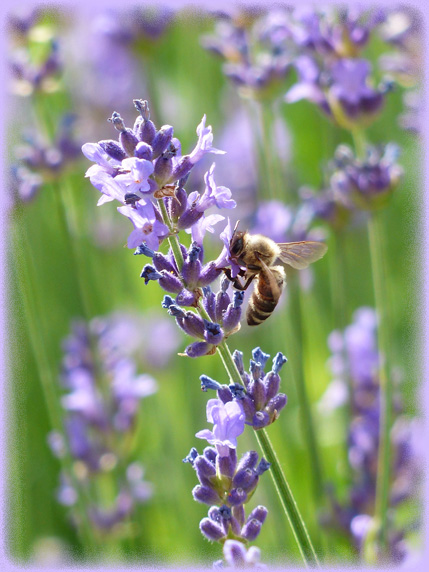

Source : Histoire & Techniques de la Distillation Parfums de Lavande, Les Routes de la Lavande
Prefecture of the Hautes-Alpes, French Republic
Lavender Collection
Ordinance
The Prefect of the Hautes-Alpes:
With reference to Articles 90, 94, 97 and 99 of the Law of 5 April 1884 as modified by the decree of 5 November 1926;
With reference to the General Counsel’s deliberations on 5 May 1927;
Considering the abuses that have occurred in the collection of lavender either done before the maturity of the plant or that the inhabitants neglected their harvesting work to collect lavender at the risk of compromising the cereal harvest which could be damaged by the frequent storms of the summer season; it is therefore in the interest of public order to forbid picking lavender before the date fixed by the Mayor, acting on the advice of the City Council according to local circumstances.
Ordinance:
Article 1. – It is forbidden to pick lavender on communal land before the date which shall be set each year by Mayoral decree following the advice of the City Council.
Article 2. – Offenders are subject to prosecution and the right is reserved to seize the lavender gathered which will be sold for the community’s profit.
Article 3 – The Mayor, the Gendarme Commanders, Police Commissioners, Water and Forest Guardians, Rural Police and all other public law enforcement agents are ordered to carry out this Ordinance.
Gap, the 1st July 1927
Prefect of the Hautes Alpes
L. Berthet
